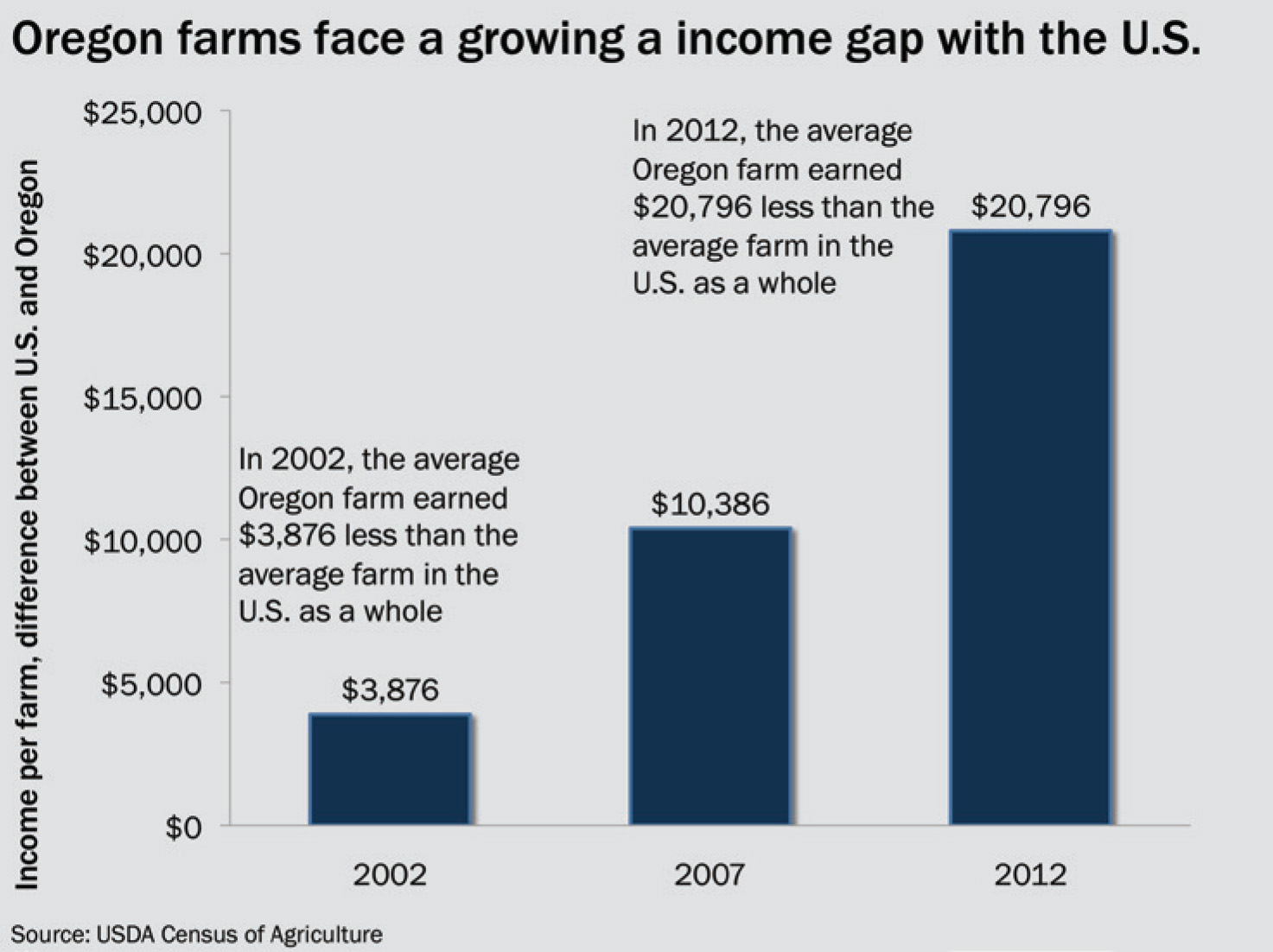And Owning Less Land
BY DR. ERIC FRUITS
The vast majority of Oregon farms remain family owned. At the same time, the state has seen a drop in the number of smaller farms. These are some of the findings of the 2012 Census of Agriculture, released by the U.S. Department of Agriculture’s National Agricultural Statistics Service (NASS). The census is taken every five years. Comparing the 2012 census with 2007 census reveals several trends.
The census reveals that Oregon’s net cash farm income was down by 10 percent between 2007 and 2012. In contrast, net cash income for the United States as a whole was up 24 percent. One major reason for the lower income is that Oregon has higher labor costs, driven by the state’s high, and annually increasing, minimum wage. Drought conditions in parts of the state contributed to higher animal feed prices.
Fundamental factors such as labor and feed costs account for the decline in farm incomes, and is reflected in stagnant incomes per farm. Between 2007 and 2012, the average farming operation in the United States saw income increase by almost $10,000, while the average Oregon operation saw income decrease by almost $500.
In other words, during a period in which United States average farm incomes increased by almost 30 percent, the Oregon farm operation experienced a 2 percent drop in income. In 2002, the average Oregon farm operation earned $3,900 less that the average farm operation in the United States as whole. Ten years later, in 2012, that gap grew to a yawning $20,800 in lower Oregon farm incomes.
In addition to the decline in perfarm incomes, the number of farms in Oregon has been declining, despite the state’s unique land use laws designed to preserve farmland. Between 2002 and 2012, the number of farms in the United States declined by 1 percent, while the number of farms in Oregon declined by 12 percent. Through consolidations and closures, Oregon had 3,114 fewer farms in 2012 than it did in 2007.
Between 2007 and 2012, the vast majority of farms remained family owned, accounting for more than 90 percent of the state’s 35,439 farms. However, the total number of acres owned by family farms has dropped from 74 percent to 70 percent, and sales have dropped from 71 percent to about 69 percent. This means that the non-family owned farms, which comprise only 9 percent of the total number of farms, account for 30 percent of the total number of acres farmed and 31 percent of the sales.
In 2012, there were 4,000 fewer smaller farms — those reporting less than $10,000 in annual sales — than there were in 2007. These smaller farms account for 64 percent of all Oregon farms and only 1.9 percent of Oregon’s total sales of agricultural products.







